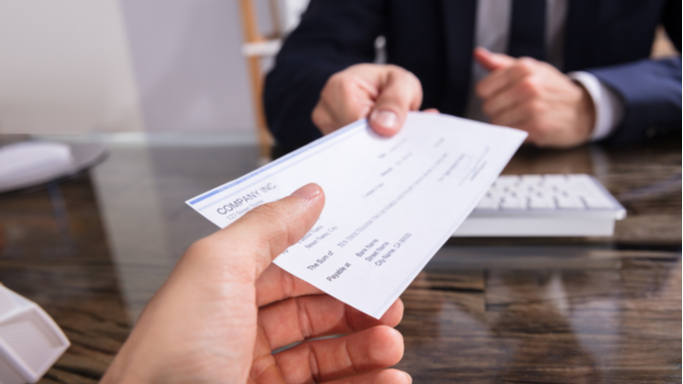President Joe Biden wants Congress to greenlight a $1,400+ stimulus check to nearly every household soon. This is on top of the $600+ checks that hit Americans’ bank accounts this month and follows the $1,200+ stimulus checks provided through the 2020 CARES Act.
Can you guess what American households spent their checks on most? The answer will surprise you.
They didn’t spend it, they saved it. Americans were sitting on $1.4 trillion of stimulus check cash by the last quarter of 2020.
Now that we have insights into consumer spending habits from the first round of stimulus checks, it’s time to apply them to current demands for more stimulus spending.
When will Washington recognize that this approach is not having the intended economic impact? The aid is not targeted at those who truly need it and the economy remains locked down in too many areas.
Here’s what we spent those $1,200+ CARES Act stimulus checks on
According to an analysis by the Federal Bank of New York, of the $1,200 stimulus checks:
- 36 percent of the payment was saved.
- 35 percent was used to pay down debt.
- 18 percent was used for essential spending (such as necessary daily living expenses).
- 8 percent was used for non-essential spending (such as hobbies, leisure, and vacation).
- 3 percent of the funds donated.
Last spring, Americans were uncertain of how long the pandemic would last, their job security, and financial situation. They squirreled away the stimulus payments that totaled $3,400 for a family of four ($1,200 per adults and $500 per child for incomes up to $99,000 for individuals and $198,000 for joint filers).
As a result, economists believe that American households had $1.4 trillion in savings by the end of the third quarter. This is the equivalent of 10 percent of total household spending in 2019. In November, the personal savings rate was nearly double its 2019 level (12.9 percent v. 7.5 percent).
Gallup polling found similar sentiments about savings in September. Just over half of Americans (54 percent) said they were saving at least a little money. Among those who saved, a whopping three out of four of them (76 percent) planned to continue to build up savings in the next six months. Purchasing basic goods and services, paying down debt, and non-essential spending like vacations or personal travel registered much lower.
Interestingly, Americans indicate that they are waiting for businesses to reopen and the vaccine to be widely distributed before stepping up their spending.
Consumption spending drives upwards of 70 percent of national economic activity, which means that until Americans feel comfortable to shop, travel, vacation, dine out, and party, no number or amount of stimulus checks will be enough to boost hiring to meet increased demand.
Implications for more stimulus
These consumption insights predate the second round of stimulus checks. This latest round of $600+ payments to adults (with annual incomes up to $75,000), plus another $600 per child, delivered $2,400 for a family of four.
For the over 15 million workers who lost their jobs over the course of the year due to the pandemic, these stimulus payment checks and unemployment benefits were lifelines to keep them afloat. This is precisely what our social safety net is created to do: cushion the blow of economic hardship, especially when the government is the cause of economic hardship by forcing employers to shut down and businesses to operating under several restrictions.
However, there are many households that experienced no disruption to their employment. These are workers who transitioned seamlessly from an office to work from home. Their incomes did not fall and they continue to feel confident about their employment prospects.
That’s a stark difference with service-based jobs such as restaurant and bar staff, retail staff, and hotel staff.
At IWF, we have maintained since the start of this pandemic that any stimulus aid should be targeted, temporary, and flexible. Stimulus checks have so far not been targeted to those who truly need them.
Before Congress signs off on another round of stimulus checks, they need to ask whether more money this needed, and if so who really needs it.

